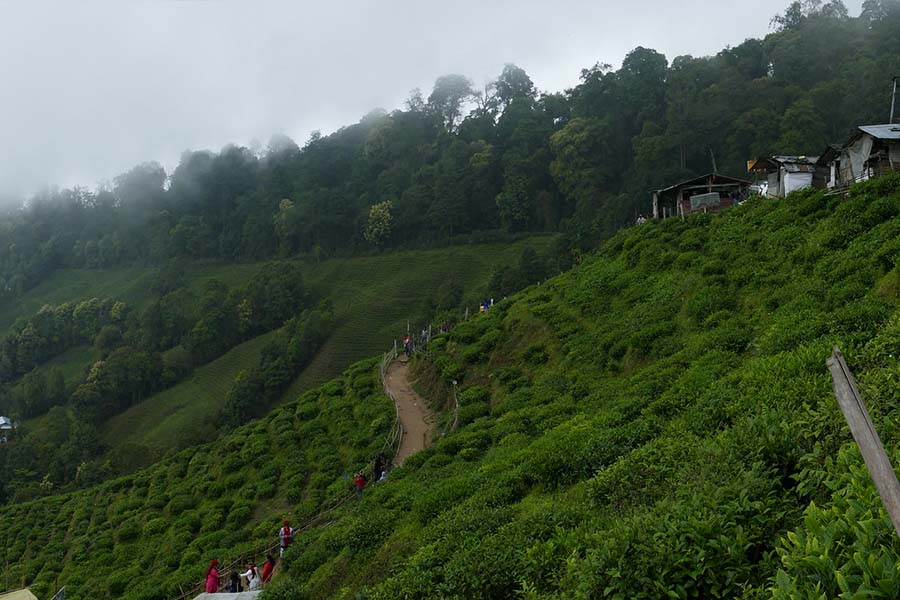Pench National Park, Wildlife Sanctuary, Tiger Reserve, India Safari, Ecotourism

Pench National Park, a celebrated wildlife sanctuary in central India, offers a unique blend of natural beauty and diverse wildlife. As one of the country’s prominent tiger reserves, it has become a prime destination for ecotourism and wildlife enthusiasts. But what makes Pench National Park truly special? Let’s embark on a journey to explore the depths of this natural wonder, its history, rich biodiversity, and the efforts made to conserve this beautiful ecosystem.
Pench National Park: A Brief History

The history of Pench National Park is as rich and fascinating as its biodiversity. Established in 1977 and later declared a tiger reserve in 1992, Pench has long been a site of conservation and admiration. The park derives its name from the Pench River, which meanders through the park, adding to its scenic beauty and providing a vital water source for the area’s flora and fauna. This region has been immortalized in literature, most notably in Rudyard Kipling’s “The Jungle Book,” which drew inspiration from its lush landscapes and diverse wildlife.
Geographical Location and Landscape

Situated in the southern reaches of the Satpura Hills, Pench National Park spans two states: Madhya Pradesh and Maharashtra. The park covers an area of approximately 758 square kilometers, characterized by a mix of deciduous forests, grasslands, and water bodies. The terrain is undulating, with numerous hills, valleys, and plateaus, creating a diverse habitat that supports a wide range of species. The Pench River, along with numerous streams and nallahs, provides lifelines for the park’s ecosystem.
Biodiversity in Pench National Park

Pench National Park is a treasure trove of biodiversity. Home to over 40 species of mammals, 210 species of birds, and a rich variety of flora, it offers a unique experience for wildlife enthusiasts. The park is renowned for its population of tigers, but it also hosts other iconic species such as leopards, wild dogs (dholes), Indian bison (gaur), and a plethora of deer species, including the spotted deer (chital) and the sambar.
The Tiger Reserve
One of the crown jewels of Pench National Park is its status as a tiger reserve. The park is a critical habitat for the Bengal tiger, with efforts continuously being made to monitor and increase the tiger population. Conservation strategies include anti-poaching patrols, habitat management, and community engagement initiatives. These efforts are crucial in ensuring the survival of this majestic species, which faces numerous threats from habitat loss and human-wildlife conflict.
Birdwatching Paradise
For bird lovers, Pench National Park is nothing short of a paradise. The park’s varied habitats support a diverse array of bird species, including the Malabar pied hornbill, Indian pitta, and a variety of raptors such as the crested serpent eagle and the white-eyed buzzard. Seasonal migratory birds add to the avian diversity, making Pench a must-visit for birdwatchers. The best time for birdwatching is during the winter months, when migratory species are present.
Flora of Pench National Park
The flora of Pench National Park is equally diverse, with a mix of dry deciduous forests and tropical moist deciduous vegetation. Teak and bamboo are the predominant tree species, accompanied by a variety of shrubs, herbs, and grasses. The undergrowth provides essential cover and food sources for the park’s herbivorous inhabitants, while the trees serve as habitats for numerous bird species.
Safaris and Wildlife Tours
Experiencing the wildlife of Pench National Park is best done through guided safaris. The park offers both jeep and elephant safaris, allowing visitors to explore different zones and habitats. Jeep safaris are particularly popular, offering a chance to cover more ground and spot wildlife such as tigers, leopards, and wild dogs. For a more intimate experience, elephant safaris provide a unique vantage point and are ideal for observing animals in their natural habitats.
Best Time to Visit
The best time to visit Pench National Park is between November and April, when the weather is cooler and wildlife sightings are more frequent. During these months, the vegetation is less dense, making it easier to spot animals. The park remains open from October to June, with each season offering its own unique experiences. The summer months, although hotter, are also excellent for wildlife sightings around water bodies.
Accommodation Options
Pench National Park offers a range of accommodation options to suit different preferences and budgets. From luxury resorts that provide all modern amenities to eco-camps that offer a more rustic and immersive experience, visitors can choose according to their needs. Many of these accommodations also offer guided tours and nature walks, enhancing the overall experience of visiting the park.
Ecotourism and Responsible Travel
As a protected area, Pench National Park places a strong emphasis on ecotourism and responsible travel. Visitors are encouraged to follow guidelines that minimize their impact on the environment and wildlife. This includes staying on designated paths, avoiding loud noises, and not feeding the animals. By practicing responsible travel, visitors can help preserve the park’s natural beauty and biodiversity for future generations.
Local Culture and Heritage
The area surrounding Pench National Park is rich in cultural heritage. The local tribes, such as the Gond and Baiga, have a deep connection with the land and its wildlife. Their traditions and lifestyles offer a unique perspective on the region’s natural history. Many tour operators offer cultural experiences that include visits to local villages, traditional music and dance performances, and opportunities to learn about the indigenous ways of life.
Photography Tips for Pench

Pench National Park is a photographer’s dream, offering a wealth of opportunities to capture stunning images of wildlife and landscapes. To make the most of your photography experience, consider the following tips: use a telephoto lens for close-up shots of animals, be patient and observant, and respect the wildlife by maintaining a safe distance. Early morning and late afternoon light provide the best conditions for photography, highlighting the park’s natural beauty.
Challenges and Conservation Efforts
Despite its beauty and biodiversity, Pench National Park faces several challenges. Habitat degradation, human-wildlife conflict, and poaching are ongoing threats that require constant vigilance and proactive measures. Conservation efforts include habitat restoration, community engagement, and anti-poaching initiatives. These efforts are essential in ensuring the long-term survival of the park’s wildlife and ecosystems.
Conclusion
Pench National Park is a shining example of India’s rich natural heritage. From its majestic tigers to its vibrant birdlife and lush landscapes, the park offers a unique and unforgettable experience for visitors. As we look to the future, it is crucial to continue supporting conservation efforts and promoting responsible travel. By doing so, we can help preserve this natural wonder for future generations to enjoy.
FAQs
What is the best time to visit?
The best time to visit is between November and April, when wildlife sightings are more frequent and the weather is cooler.
What types of safaris are available here?
The park offers jeep safaris and elephant safaris, allowing visitors to explore different zones and habitats.
Can I see tigers in Pench National Park?
Yes, Pench National Park is a tiger reserve, and with a bit of luck, visitors may spot these majestic creatures during a safari.
Are there accommodation options inside the park?
While there are no accommodations inside the park, there are plenty of options nearby, ranging from luxury resorts to eco-camps.
Is Pench National Park suitable for birdwatching?
Absolutely! Pench is home to over 210 species of birds, making it a paradise for birdwatchers.
How can I support conservation efforts in ThePark?
Visitors can support conservation efforts by following park guidelines, participating in eco-friendly tours, and supporting local communities.


